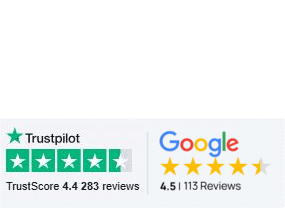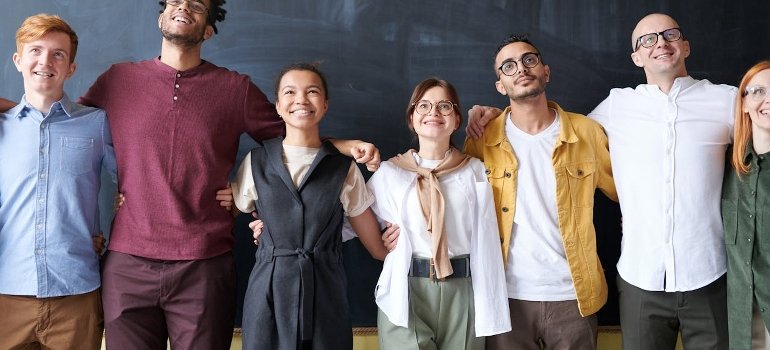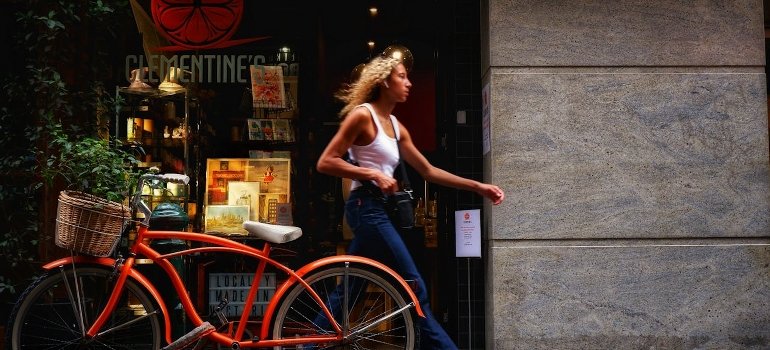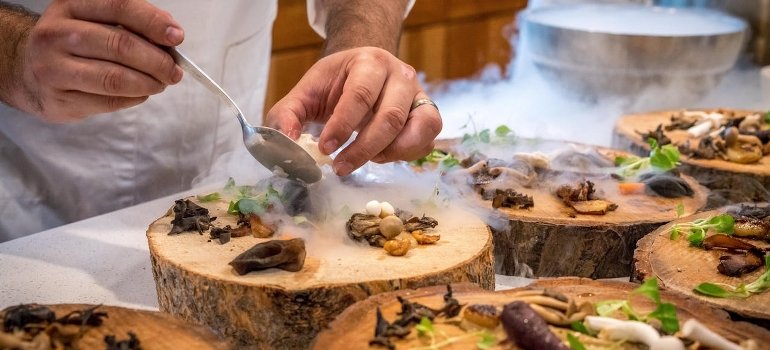Why Moving to Melbourne Can Change the Way You Live and Work

Get a Free Moving Quote Now!
Start Your International Moving Journey





Melbourne has a way of drawing people in with its mix of opportunity, culture, and lifestyle. Many who make the leap say the city changes how they approach both their personal and professional lives. International movers often hear from clients who choose Melbourne not just for work, but for the promise of a more balanced and vibrant life. Moving to Melbourne means stepping into a city where business districts buzz alongside café-lined laneways, and where weekends can be just as productive as weekdays in unexpected ways. It’s a place where your social circle might include colleagues from across the globe, and your neighborhood could be a few tram stops from the beach. If you’ve been weighing your options for relocation, this city offers more than a new address—it offers a chance to reshape your lifestyle on your terms.
How Does Cultural Diversity Open New Doors?
Melbourne is one of the most multicultural cities in the world, with over 140 cultures represented and more than a third of residents born overseas. This creates an environment where meeting new people and building connections becomes natural. Moving to Australia in this context means stepping into a place where every suburb has its own mix of languages, foods, and traditions. It’s common to network over a Lebanese breakfast in Brunswick, discuss business plans with someone from Greece in Oakleigh, and enjoy Vietnamese street food in Footscray after work. Diversity isn’t just a talking point—it’s part of how the city runs, from its workforce to its festivals. This constant cultural exchange can expand your thinking, open new professional collaborations, and make everyday life feel richer and more engaging.

Examples of Cultural Impact on Daily Routines
In Melbourne, cultural influence goes far beyond restaurants and festivals—it shapes working styles, collaboration methods, and even meeting etiquette. Many offices accommodate multiple public holidays to reflect their diverse staff, while schools integrate multicultural days into the curriculum. Local councils often provide translation services for community events, making information accessible in dozens of languages. In day-to-day life, you might join a community sports team where the post-game meal changes depending on which members are hosting, or attend networking sessions that mix professional introductions with traditional dance or music performances.
How Does Melbourne Encourage Better Work-Life Balance?
Many cities talk about work-life balance. But Melbourne backs it up with tangible practices. Employers here are increasingly open to flexible work arrangements, remote days, and staggered hours. Moving to Europe from USA can sometimes mean adjusting to slower work cultures, but Melbourne strikes a rare balance between ambition and downtime. A morning might start with a walk along the Yarra River before logging in from a coworking space, and lunch might stretch in a way that feels unhurried but productive. The city’s layout encourages short commutes, and public parks are built into the daily rhythm for people to recharge. Even in corporate settings, it’s not unusual to take a proper coffee break without checking your watch every few minutes. The result is a pace that allows career growth without burning out.
Influence of Green Spaces on Productivity
The integration of parks, river trails, and waterfronts into Melbourne’s design means people often blend outdoor time into workdays. Some companies host walking meetings along the Yarra or use rooftop gardens for brainstorming sessions. Remote workers can set up in public gardens with free Wi-Fi, combining fresh air with task lists. Even high-rise office towers incorporate relaxation areas and greenery to reduce stress. Public spaces are kept well-lit and secure, allowing for evening strolls or exercise after work without disrupting personal safety or schedules. This emphasis on natural breaks helps maintain energy levels and keeps creativity flowing.
Why Is the Job Market So Attractive for Newcomers?
Melbourne’s economy is broad and resilient, with strong sectors in finance, technology, creative industries, education, and healthcare. Median salaries in these industries range from AUD 80,000 to AUD 120,000, and demand for skilled workers continues to grow. International household goods movers often note that people relocating for work are drawn by the range of career paths available here. The CBD houses major corporate headquarters, while surrounding suburbs have hubs for startups and creative agencies. Healthcare roles are in steady demand due to the city’s growing population, and the tech sector benefits from government-backed innovation programs. This variety means you can pivot careers without leaving the city, or upskill in a field with strong long-term prospects.
Emerging Sectors That Are Gaining Momentum
While established industries like finance and healthcare dominate, newer sectors are growing fast. Renewable energy companies are setting up regional offices, creating roles in engineering, project management, and policy. Cybersecurity is also on the rise, with local startups partnering with global tech firms to meet increasing demand. The creative tech space—combining design, gaming, and storytelling—has attracted government grants and international attention. For professionals looking for a less saturated market, fields like agritech and sustainable architecture are gaining traction, offering the chance to build expertise early and stand out in competitive hiring pools.

How Does Melbourne Support Creative and Entrepreneurial Ambitions?
The city’s creative energy is hard to miss, from its street art-covered laneways to its startup accelerators and networking events. International movers in NYC have noticed that clients moving here often talk about wanting a more collaborative and less cutthroat environment for launching projects. Melbourne delivers that with shared workspaces like The Commons and Creative Cubes, along with industry-specific incubators that connect entrepreneurs to mentors and funding. The city also invests in creative grants and festival programs, offering artists and innovators platforms to showcase their work. Even in tech-heavy sectors, design and user experience are valued, making it a natural home for cross-disciplinary collaboration.
The Role of Networking Communities in Growth
Beyond coworking spaces, Melbourne thrives on its informal networking culture. Weekly meetups across industries—from film production to fintech—often happen in casual venues like pubs, cafés, or shared studios. These settings lower barriers between established professionals and newcomers, making mentorship more accessible. Many creative districts host open-studio days where visitors can tour workspaces and discuss projects directly with creators. Hackathons and pitch nights draw investors, collaborators, and media, often turning small ideas into funded ventures within weeks. This open-door approach fuels innovation by ensuring ideas are tested and refined through direct community feedback.
What Educational Opportunities Can Reshape Your Career?
Melbourne is home to top-ranking universities like the University of Melbourne and Monash University, as well as a wide network of TAFE colleges offering vocational training. International moving cost considerations often include education as a long-term investment, and here it can pay off quickly. Short courses in coding, digital marketing, or project management can be completed in weeks, while postgraduate degrees draw students from across the globe. These institutions are integrated into the city’s professional networks, so studying often leads directly to work placements or job offers. Education isn’t limited to formal programs—public lectures, workshops, and professional meetups happen year-round, creating constant opportunities to learn and grow.
How Melbourne Integrates Learning Into the Workforce
Employers in Melbourne often encourage staff to upskill during work hours, offering paid time for short courses or certifications. Partnerships between universities and businesses allow for applied research projects, giving students and professionals real-world experience. Local councils run free evening classes in areas like coding basics, business planning, and language skills, making education accessible regardless of schedule or budget. Industry conferences are frequent and affordable compared to global counterparts, providing face-to-face access to leaders without the high travel costs. These opportunities keep the workforce competitive and adaptable to shifting market demands.
How Easy Is It to Live Without a Car in Melbourne?
Public transport in Melbourne is reliable, widespread, and integrated, with trams, trains, and buses covering most of the metro area. Container shipping clients who move here sometimes sell their cars before arrival, knowing they can get around easily without one. The tram network alone has over 250 kilometers of track, and a daily or monthly Myki pass makes commuting predictable in cost. Cycling infrastructure is also expanding, with dedicated bike lanes in many inner suburbs, and car-share services fill the gap when a vehicle is needed. Living car-free can save thousands annually in fuel, insurance, and parking fees, and it encourages you to live in neighborhoods where everything you need is within easy reach.

Adapting to the City’s Active Transport Culture
Cycling isn’t just recreational here—it’s a recognized mode of commuting supported by bike-friendly laws and infrastructure. Bike parking stations, repair kiosks, and even showers in office buildings make cycling viable year-round. The tram network’s free zone in the CBD encourages walking and short-distance travel without extra cost. Mobile apps integrate public transport schedules with ride-share options, allowing for seamless connections when trips extend beyond tram lines. Some residential complexes are built with minimal parking and expanded bike storage, reflecting a shift toward prioritizing space for community gardens or shared recreational areas over vehicle storage.
How Does Food and Coffee Shape Social and Professional Life?
Melbourne’s food scene is woven into both leisure and business. The city boasts over 3,500 cafés, and coffee here is considered an art form. International movers in NJ often mention that clients moving here are excited about how the café culture can double as networking space. Business meetings also take place over flat whites, and many professionals have a favorite barista who knows their order. Dining options range from Michelin-starred restaurants to hidden dumpling houses, reflecting the city’s multicultural makeup. Food festivals and night markets add another layer, turning mealtimes into community events where personal and professional networks often overlap.
How Hospitality Venues Double as Workspaces
In Melbourne, cafés often function as unofficial offices, complete with power outlets, high-speed internet, and staff accustomed to regulars spending hours over a single drink. Some even provide private meeting pods for small groups. Restaurants and bars host business networking breakfasts or after-work mixers, blending social interaction with career development. The food scene’s competitive nature keeps standards high, which means a client lunch can be both impressive and affordable. Seasonal menus and pop-up kitchens add variety, ensuring regular dining spots feel fresh and conversation-worthy all year round.
How Do Major Events Influence the City’s Energy?
Melbourne’s calendar is packed with global and local events that draw crowds and create a unique rhythm in daily life. From the Australian Open to the Melbourne International Comedy Festival, there’s always something happening. Moving to Melbourne during these peak periods means quickly becoming part of a shared city experience. Events bring an influx of visitors, boosting the hospitality and service industries while also providing residents with world-class entertainment just minutes from home. Even if you’re not directly involved in event-related work, these occasions can shape traffic patterns, workplace schedules, and after-hours plans in ways that keep life dynamic.

The Flow-On Effects of Event Tourism
Large-scale events boost more than the entertainment sector—they create short-term job opportunities, increase demand for local suppliers, and inspire public infrastructure upgrades. Sporting events also lead to temporary street closures, which encourage businesses to set up outdoor seating or market stalls. Festivals often spark neighborhood revitalization, as areas invest in lighting, signage, and beautification to attract attendees. Hotels, transport services, and retail all benefit, and residents gain access to new amenities that remain long after the crowds leave. These ripple effects can make certain districts more appealing for both living and working.
How Moving to Melbourne Can Redefine Your Life and Career
Making the move isn’t just about changing your address—it’s about reshaping how you live and work every day. Moving to Melbourne places you in a city where career options span multiple industries, cultural experiences are built into the week, and daily routines can balance productivity with enjoyment. From efficient transport but also world-class coffee and outdoor escapes, the environment here pushes you to rethink priorities and habits. Costs can be managed smartly, and housing choices allow for different rhythms of life without losing access to the city’s core benefits. For those ready to make a change that’s both professional and personal, Melbourne offers the tools and atmosphere to make it happen.
